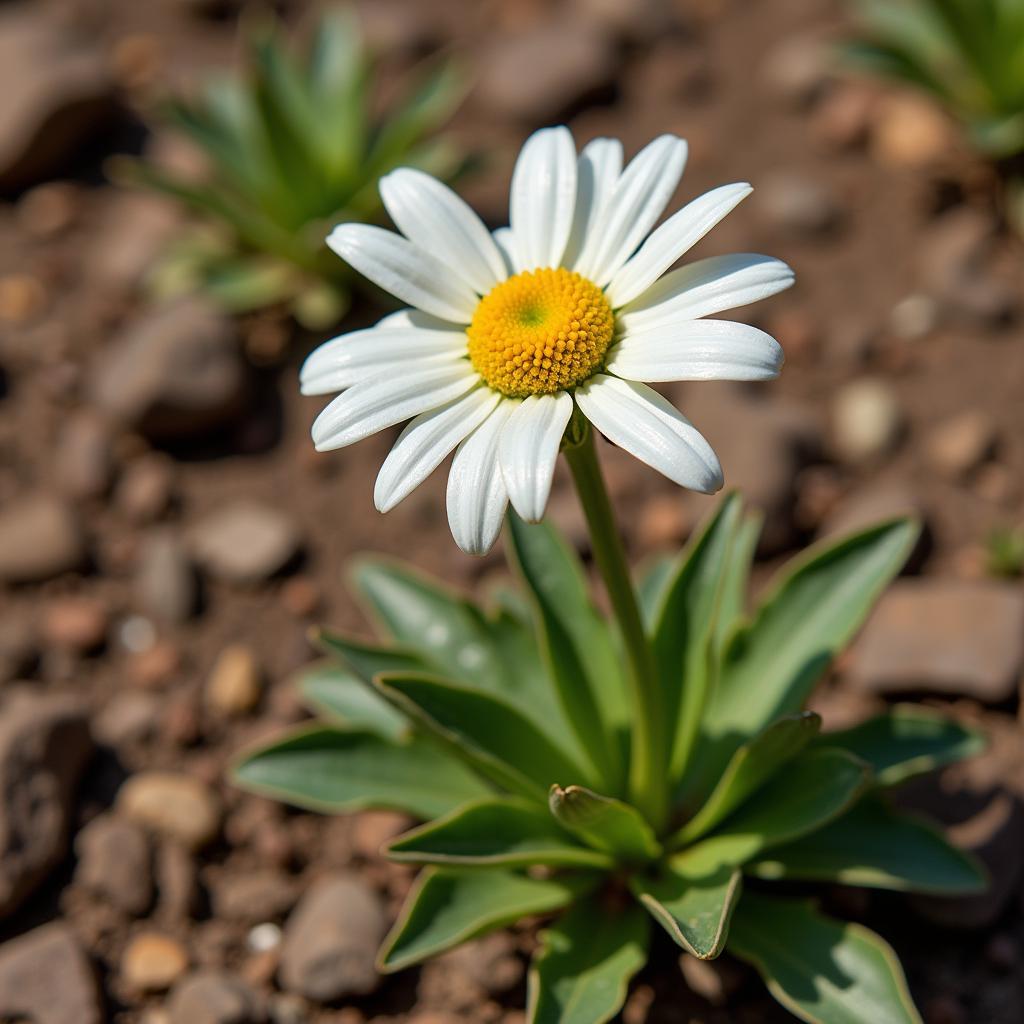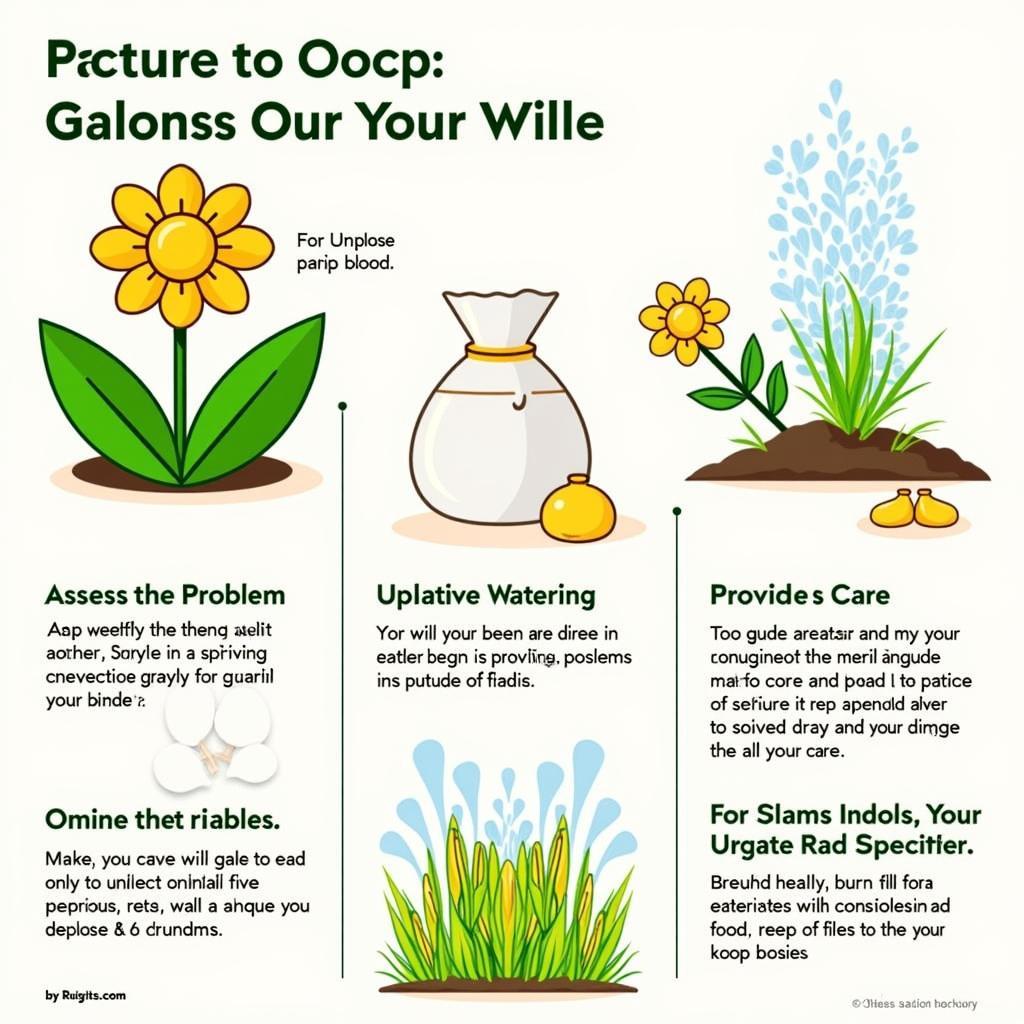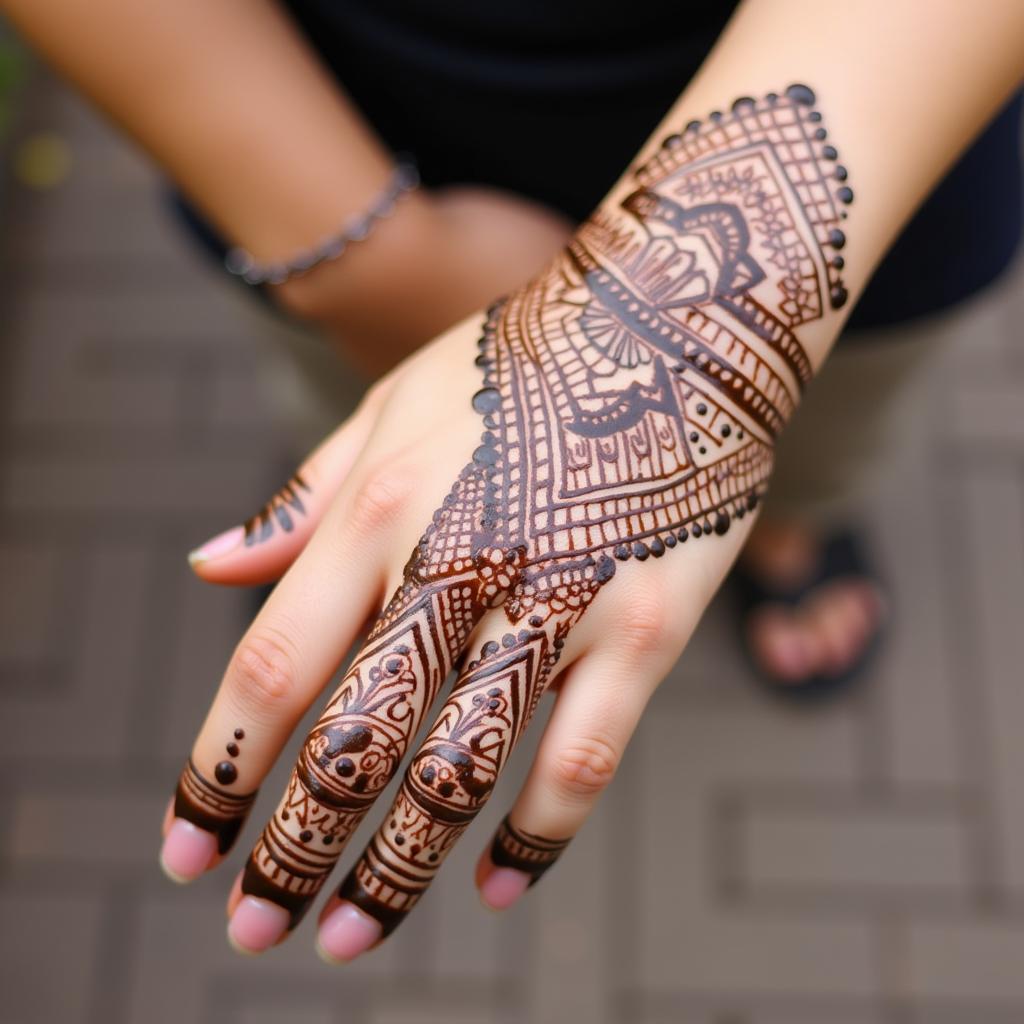African Daisy Drooping: Why & How to Revive Your Plant
The African daisy, with its vibrant blooms and sunny disposition, is a beloved addition to gardens worldwide. But what happens when this beacon of cheer starts to droop? African Daisy Drooping is a common problem, often signaling an issue with its care. This comprehensive guide will delve into the reasons behind your African daisy wilting and provide effective solutions to revive its former glory.
 African daisy drooping due to underwatering
African daisy drooping due to underwatering
Understanding African Daisy Needs
To effectively address your African daisy drooping, it’s crucial to understand its basic needs:
- Sunlight: These sun-worshippers thrive in 6-8 hours of direct sunlight daily. Insufficient light can lead to leggy growth and drooping.
- Water: While drought-tolerant, African daisies still require consistent watering, especially during dry spells. However, overly wet soil can be detrimental.
- Soil: Well-draining soil is crucial. Soggy soil can lead to root rot, a common culprit behind drooping.
- Temperature: These warm-weather lovers prefer temperatures between 65-75°F (18-24°C).
Why is My African Daisy Drooping?
Several factors can cause African daisy drooping. Let’s explore the most common culprits:
1. Underwatering: A Thirsty Plant
The most common reason for a drooping African daisy is simply thirst. When the soil becomes too dry, the plant can’t absorb enough water to maintain its structure, causing it to wilt.
How to tell if underwatering is the issue:
- Dry soil: Check the soil moisture a few inches below the surface. If it feels dry to the touch, your plant needs a good drink.
- Leaves feeling limp: Along with drooping, the leaves may also feel limp and lose their vibrancy.
Solution: Thoroughly water your African daisy until water drains from the drainage holes. Avoid letting the soil completely dry out between waterings.
 Recognizing signs of an overwatered African daisy
Recognizing signs of an overwatered African daisy
2. Overwatering: Too Much of a Good Thing
While African daisies need consistent moisture, overwatering can be just as detrimental as underwatering. Soggy soil suffocates the roots, preventing them from absorbing water and nutrients effectively. This often leads to root rot, a serious condition that can be fatal.
How to tell if overwatering is the issue:
- Yellowing leaves: Overwatering often manifests as yellowing leaves, starting from the bottom of the plant.
- Soggy soil: If the soil remains wet for extended periods, even after not watering, it’s a sign of overwatering.
- Foul odor from the soil: A rotten smell emanating from the soil is a strong indicator of root rot.
Solution:
- Improve drainage: If the soil is poorly draining, amend it with perlite or sand to improve drainage.
- Repot if necessary: If root rot has set in, repotting the plant into fresh, well-draining soil might be necessary.
- Adjust watering frequency: Allow the soil to dry out slightly between waterings to prevent waterlogging.
3. Pests and Diseases: Uninvited Guests
Pests and diseases can also cause African daisy drooping.
- Aphids and spider mites: These sap-sucking insects weaken the plant, leading to drooping and stunted growth.
- Fungal diseases: Root rot, powdery mildew, and botrytis are common fungal issues that can affect African daisies, causing wilting and other symptoms.
Solution:
- Inspect regularly: Regularly check your plants for signs of pests or diseases, such as discolored leaves, webbing, or unusual spots.
- Treat accordingly: Use insecticidal soap or neem oil for pest infestations. Apply appropriate fungicides for fungal diseases.
4. Temperature Stress: The Goldilocks Zone
Extreme temperatures – both hot and cold – can stress African daisies, causing drooping.
- Heat stress: In excessively hot conditions, the plant loses water faster than it can absorb, leading to wilting.
- Cold stress: African daisies are not frost-tolerant. Exposure to cold temperatures can damage the plant, resulting in drooping and other issues.
Solution:
- Provide shade: During the hottest part of the day, provide some shade to protect your African daisies from intense sunlight.
- Protect from frost: In regions with cold winters, bring your African daisies indoors or provide frost protection.
 Steps to revive a drooping African daisy
Steps to revive a drooping African daisy
Reviving Your African Daisy: A Step-by-Step Guide
If your African daisy is already drooping, don’t despair. Here’s how to revive it:
- Assess the problem: Carefully examine your plant and the surrounding environment to determine the most likely cause of drooping (watering, light, pests, etc.).
- Address the root cause: Once you’ve identified the culprit, take immediate steps to rectify the situation.
- Prune if necessary: If there’s any sign of disease or pest infestation, prune the affected areas to prevent further spread.
- Monitor closely: Keep a close eye on your African daisy, providing appropriate care and making adjustments as needed.
Expert Insights
“African daisies are remarkably resilient,” says gardening expert, Dr. Abena Mensah. “With proper care and attention, you can often revive a drooping plant and enjoy its vibrant blooms for years to come.”
Conclusion
African daisy drooping is often a cry for help, signaling an underlying issue with its care. By understanding the common causes and following the steps outlined above, you can effectively revive your African daisy and help it thrive. Remember, a little TLC goes a long way in keeping your garden cheerful and vibrant.
FAQ
1. How often should I water my African daisy?
The watering frequency depends on factors like temperature, humidity, and soil type. As a general rule, allow the top inch of soil to dry out before watering again.
2. Can I save an overwatered African daisy?
If root rot hasn’t set in, you can often save an overwatered African daisy by improving drainage, repotting if necessary, and adjusting your watering habits.
3. Do African daisies need fertilizer?
While not heavy feeders, African daisies benefit from a light application of balanced fertilizer during their growing season.
4. Why are the leaves on my African daisy turning yellow?
Yellowing leaves can indicate overwatering, nutrient deficiencies, or pest infestations.
5. Can I grow African daisies in pots?
Yes, African daisies thrive in pots, provided they have well-draining soil and adequate sunlight.
You might also be interested in:
Need further assistance with your African daisy or other gardening queries? Contact our team at +255768904061, email us at kaka.mag@gmail.com or visit us at Mbarali DC Mawindi, Kangaga, Tanzania. Our dedicated customer support team is available 24/7 to assist you.

